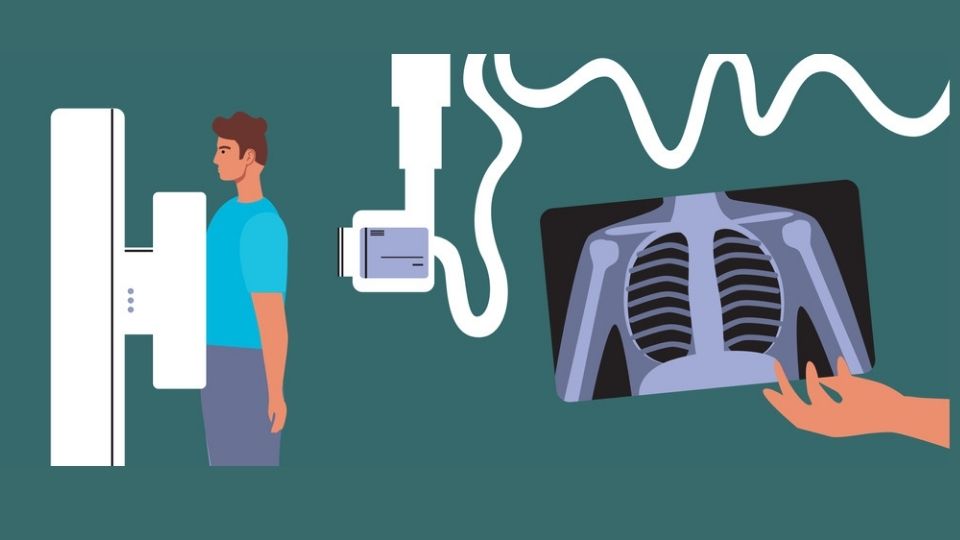Radiography using x-ray technology is widely used to screen and diagnose a wide variety of health issues- helping detect problems in the joints and internal organs. It is a non-invasive procedure and potentially harmless, using radiation to quickly and efficiently capture images of the body’s internal structures.
There have been radical advancements in the field of radiology- introducing better, faster and more efficient technologies for precise diagnosis and treatment. The traditional x-rays are being fast replaced by modernized digital radiography. Now, you can easily get digital x-ray at home – ensuring an improved patient care experience. It is used to:
- Painlessly and non-invasively help to detect an underlying health condition and monitor treatment
- Support planning surgical or medical treatment
- Direct medical professionals as they insert stents, catheters, etc. inside the body or to remove blood clots, treat tumors, or prevent blockages
So, let’s understand how digital radiography is shaping x-ray trends for medical applications.
What are Digital X-Rays?
Digital x-rays are bringing radical changes in medical imaging by digitally transferring x-ray imaging into a Picture Archiving and Communication System (PACS) instead of using computed radiography (CT) or films. The digital radiography machine transmits x-ray photons that are converted into digital images using different solid-state detectors like silicon or amorphous selenium. A computer system is used to process and display the images.
A major highlight of digital radiography X-ray is it can be conveniently used for clinical installations as well as portable x-ray through devices that can be wheeled for imaging exams. This has further increased the scope of DR X-ray applications in modern medical diagnosis.
Why Digital X-rays are Gaining More Significance in Diagnostic Imaging Than Traditional Imaging?
Discussed here are some reasons how digital radiography is changing the face of diagnostic imaging:
- Radiation Exposure: When it comes to X-rays, one of the biggest concerns for the patients is the level of radiation exposure. While radiation emitted during the procedure is relatively low and is safe for the human body, digital radiography helps reduce radiation exposure by up to 70% as compared to traditional x-rays.
This makes digital radiography an ideal choice for x-ray at home because the procedure can be done at the comfort of your home but without any potential side effects. The machines are highly advanced and the technicians performing the procedure are highly trained to provide safe and reliable x-ray at home service.
- Image Quality: Unlike traditional x-rays, digital radiography renders crisp and clearer images in high resolution. Since the images are captured on a computer device, they can be manipulated or enlarged as required by the doctor. This helps in better diagnosis because the doctors can detect even the minutest details that otherwise could not be captured through traditional x-rays.
Additionally, since the images are captured in high quality, it reduces the need to repeat the procedure- thus, minimising the patient’s repeated exposure to radiation.
- Promptness of Reporting: Traditional x-rays require developing the films in the darkroom which may take up to 24 hours. Hence, the reports may be a little delayed. In digital x-rays, the images are captured and processed on a computer device; hence, they can be shared immediately with the doctor for prompt diagnosis and treatment. Even for portable x-ray procedures performed at home, the reports can be instantly shared for quicker diagnosis and treatment, particularly in emergency patients.
- Convenience: When it comes to efficiency and convenience, digital radiology stands a step ahead because of rapid advancements in technology. While traditional x-ray is still widely used across India, digital technology has now made it possible to provide x-ray at home. Portable x-ray machines can be easily used at home settings for elderly patients or those who are suffering from an injury or other health condition.
For them, it may be difficult to visit a medical facility or imaging centre to get the x-ray done. Hence, digital radiography technology can be used to conduct the procedure at home, safely and conveniently.
- Cost: Typically, the cost of traditional x-ray is less than digital x-ray imaging due to advanced technology systems associated with the latter. The machines are more sophisticated, the images are detailed & accurate, and reports are prompt. Hence, the x-ray costs are a bit higher.
Addressing the common challenges that conventional x-ray brings, digital radiography is paving the way for high-quality, safe and reliable imaging in 2022 and beyond.


